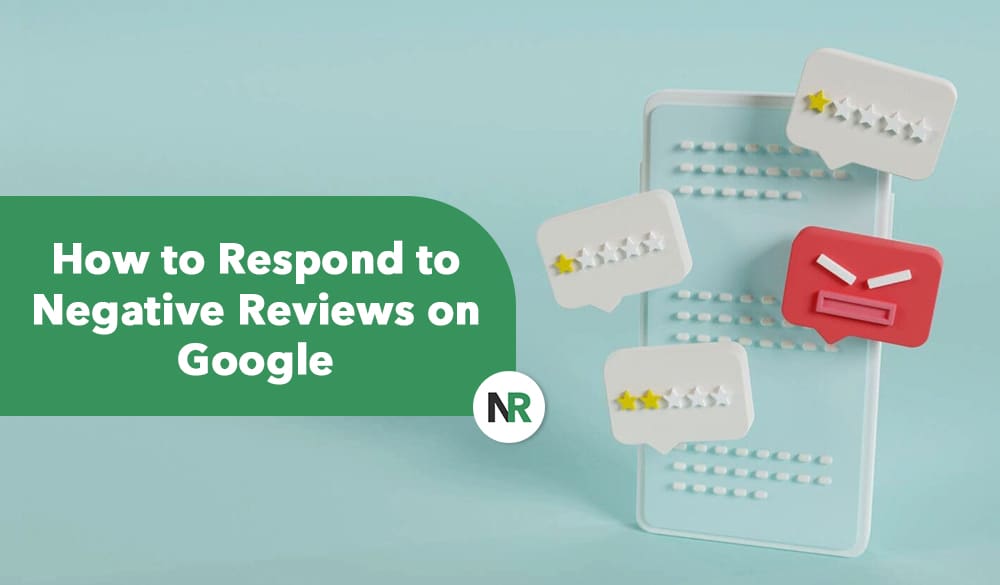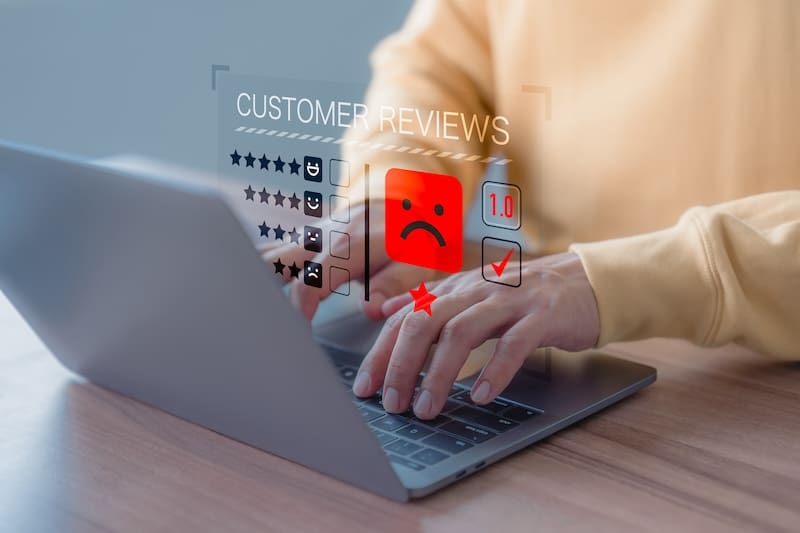This article will teach you how to respond to negative reviews on Google so you can protect your online reputation.
Have you let your online review management system fall by the wayside? Or did you forget to create one in the first place?
Monitoring Google reviews and customer feedback on other platforms is a cornerstone of running a business.
According to Power Reviews, which gathered responses from over 6,500 U.S. consumers, more than 99.9% of shoppers read reviews at least sometimes when shopping online. This has increased from 97% in 2018, which shows that online reviews are only growing in their importance.
Furthermore, 57% of consumers also read reviews when they’re shopping in brick-and-mortar stores so they can assess purchase options before making a decision.
It’s impossible to know where your business stands in terms of customer satisfaction when you don’t see good reviews or negative reviews. Both types of reviews are necessary to review in order to get the full scope of how your business is doing.
On top of that, having a negative review response system is key to improving the customer’s experience when your business has failed them in some way. Read on to learn how to handle unhappy customers when they leave bad reviews for everyone to see.
If you need help managing negative customer feedback to keep your online reputation safe, contact our team today by calling 844-461-3632 or filling out the form below.
Why Should You Respond to Negative Reviews?
In 2018, Power Reviews found that 85% of shoppers specifically sought out negative reviews. That percentage increased to 96% by 2021. Moreover, more than half of consumers look for one-star reviews.
There are a number of reasons to respond to negative reviews:
When you respond to negative reviews, you show your customers that you care. The same goes for responding to positive reviews, too!
This increases trust in your brand, both from your customers who left online reviews and potential customers who research your company online. In general, consumers are more likely to choose companies they trust rather than ones they distrust or don’t know anything about.
Also, responding to negative reviews gives customers what they want. Customers want and expect a response to their bad reviews. Failing to respond only angers them more. This damages your business’ reputation and communicates to customers that you don’t care about their experience or their feedback.
Responding to reviews and engaging on review sites can also boost your search engine optimization rankings, especially in local search results. This happens due to increased engagement and more keywords for Google to crawl.
Lastly, responding to online reviews increases the chance that customers will leave more online reviews. When customers see that leaving a review gets your attention and can be a way to solve their problem or connect with your brand, they’ll be motivated to leave more reviews in the future.
Still not convinced? According to Bright Local, 88% of consumers say they’d use a business that responds to all online reviews. And only 47% of consumers would trust a business that never responds to reviews.
9 Negative Review Response Tips to Protect Your Online Reputation
From referring to the reviewer by name to creating fill-in templates for easier review management, here are our top tips for handling a bad review before it gets out of hand.
Address Bad Reviews as Soon as Possible
Always deal with online reviews, especially negative ones, as quickly as possible. Ignoring bad reviews can do a lot of damage to your online reputation. Eventually, addressing a customer’s negative experience can be too late, and you’ll never get the chance to solve the problem and keep the customer.
Plus, waiting to deal with a bad experience can make the situation escalate. This makes it nearly impossible to solve the problem, and it also increases the chance of the review going viral. Once a bad customer experience goes viral, whether or not it’s true, your online reputation can take a major hit.
Acknowledge the Customer’s Feelings and Experience
No matter the tone of the negative feedback, thank the customer for letting you know about their experience. This makes the customer feel acknowledged, and they’ll be more receptive to your review response and proposed solution.
Additionally, apologize for their dissatisfaction and let them know that you understand why they’re frustrated.
Remember, you don’t have to agree with the reviewer to acknowledge their feelings and apologize. Your goal is to offer superior customer service, and that means seeing the situation from the customer’s viewpoint.
Personalize Your Response
When you personalize a response to a bad review, even if it’s simply by calling the customer by their name instead of “sir” or “ma’am,” you instantly improve customer engagement. By making the customer feel respected instead of one of many customers who are unfamiliar to you, you can soften them up and make the entire problem-solving process easier.
Need to speak with an expert about review management? Get in touch with us today at 844-461-3632.
Always Maintain a Professional Manner
Even if the customer complaint escalates as you’re trying to work it out with them, it’s necessary to maintain professionalism.
You might not be able to solve a problem for one unhappy customer. However, remember that other consumers — including current customers and potential new customers — are watching how you handle bad reviews online.
When you communicate with a dissatisfied customer publicly in Google reviews or on another review site, you’re speaking to your future customers, too. Take the opportunity to show the public that you provide exceptional service even in the face of negative feedback.
Offer a Solution
Providing excellent customer service means that the person you’re speaking to leaves the conversation happier than when they started — and definitely more satisfied than when they left the negative review. You should always offer some sort of solution to the problem.
The solution may be the one they’re specifically looking for, like a replacement product or a full refund. Or, if you’re not able to provide that exact solution for whatever reason, another offer should be made.
For example, if a customer wants to make a return, but the item was used and it’s three months past the return policy date, you may not be able to take the item back. However, you could offer them a partial refund, money off a future purchase, or a complimentary service.
Consider Continuing the Conversation Offline
At times, dealing with an upset customer is best done offline. First, this keeps the entire conversation private, which protects you and your brand from unnecessary criticism and negative online sentiment. Second, it protects the customer’s privacy and allows them to speak freely.
Also, more complex customer service issues are often better handled offline. Sometimes, you’ll need to speak on the phone with the customer or have a few conversations with them to get the issue sorted out. Trying to do everything via email, online chat or social media support can take too long and become frustrating for both your support team and the customer.
Monitor Multiple Review Sites
BrightLocal found that consumers tend to check out business reviews on multiple platforms, with 41% of shoppers using at least 3 sites to research reviews before making a purchase decision.
It’s important to look beyond the most obvious review platforms, too. BrightLocal found that up to 34% of consumers use social platforms like Instagram, YouTube and TikTok as business review hubs.
Google is still the top place to look for reviews, though, with 81% of consumers using Google to evaluate local businesses. The next 3 most popular sites for online reviews are Facebook, Yelp and Tripadvisor.
Reflect on Honest Feedback
When a customer provides information about a negative experience, take it seriously. When appropriate, offer an apology. This helps the customer feel heard and important. Sometimes, your response to the negative review, not the negative experience itself, is what will shape their view of your business moving forward.
Whatever the feedback is, there’s something to learn from it. Often, negative reviews can give you valuable information that you can use to improve your business and provide exceptional customer service.
Even if you don’t think a negative review has any valuable feedback in it, it probably does. For example, even a review from a bot that doesn’t have much merit can tell you that you need to monitor your reviews more closely to weed them out or add stronger filters to your review software.
Create Review Response Templates to Streamline the Process
Over time, you’ll notice that there are trends in your positive reviews and negative reviews. While it’s always smart to personalize your review responses, you can customize a ready-to-use review response template to streamline the process. This is especially helpful when handling a negative online review.
Whenever you or your team comes across a negative review that you see a lot, write a response and then turn the reply into a negative review response template. Then, the next time a similar bad review pops up, you can quickly fill in the negative review response template and post it.
This will help you reply to each negative review in a timely manner. And on top of providing a prompt response, the tone, wording and sentiment will remain the same, which exudes professionalism.
To avoid sounding too robotic, you can have 2 or 3 negative review response template alternatives to use so that your responses don’t look exactly alike.
Dos and Don’ts of Review Management
Do prioritize recency when it comes to reviews. Power Reviews found that 34% of shoppers look for reviews that aren’t more than one month old, and approximately 25% of consumers look for reviews that aren’t more than 3 months old.
Don’t pay attention only to your star ratings. According to Power Reviews, over half of consumers don’t trust a star rating unless it has an accompanying review.
Do strive for a balance of online reviews, including less-than-perfect ones. According to Power Reviews, almost half of consumers find it suspicious when a company has an average star rating of 5 out of 5. Instead of asking a reviewer to change a negative review to a 5-star one, it may be best to reply publicly so consumers can see how it was handled and the outcome.
Don’t assume that consumers won’t read past the top review. According to Power Reviews, more than half of consumers read 1 to 10 reviews. If you have recent negative reviews online, chances are that consumers will see them.
Do let AI help you manage reviews. According to Bright Local, 58% of consumers preferred review responses written by AI when compared to ones written by humans.
Review Management and Your Online Reputation
According to Power Reviews, ratings and online reviews are more important than brand, free shipping, personal recommendations, and price when it comes to making a purchase decision. This has changed over time — surveys conducted in 2014 and 2018 showed that price was the most important part of a purchase decision.
Every business should closely monitor their reviews on a regular basis to know what customers are saying online. The goal is always to turn a negative experience into a positive one.
Not only does this improve the experience of the customer who left the feedback, but it also shows potential customers that your business can be trusted.
At NetReputation, we have review management services to help you stay on top of positive reviews and negative Google reviews, respond promptly and professionally, and provide a positive experience that will protect your business and online reputation.
Contact us today at 844-461-3632 or by filling out the form below for a free consultation.





